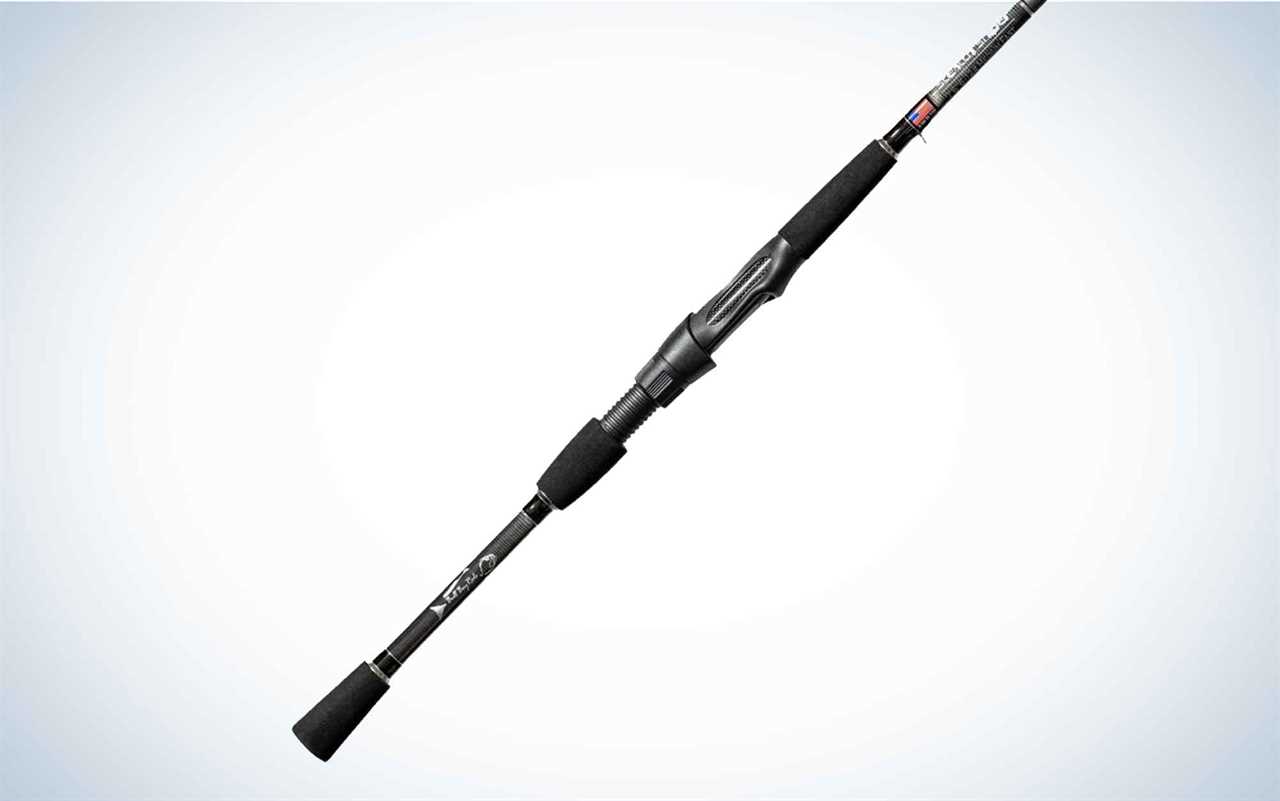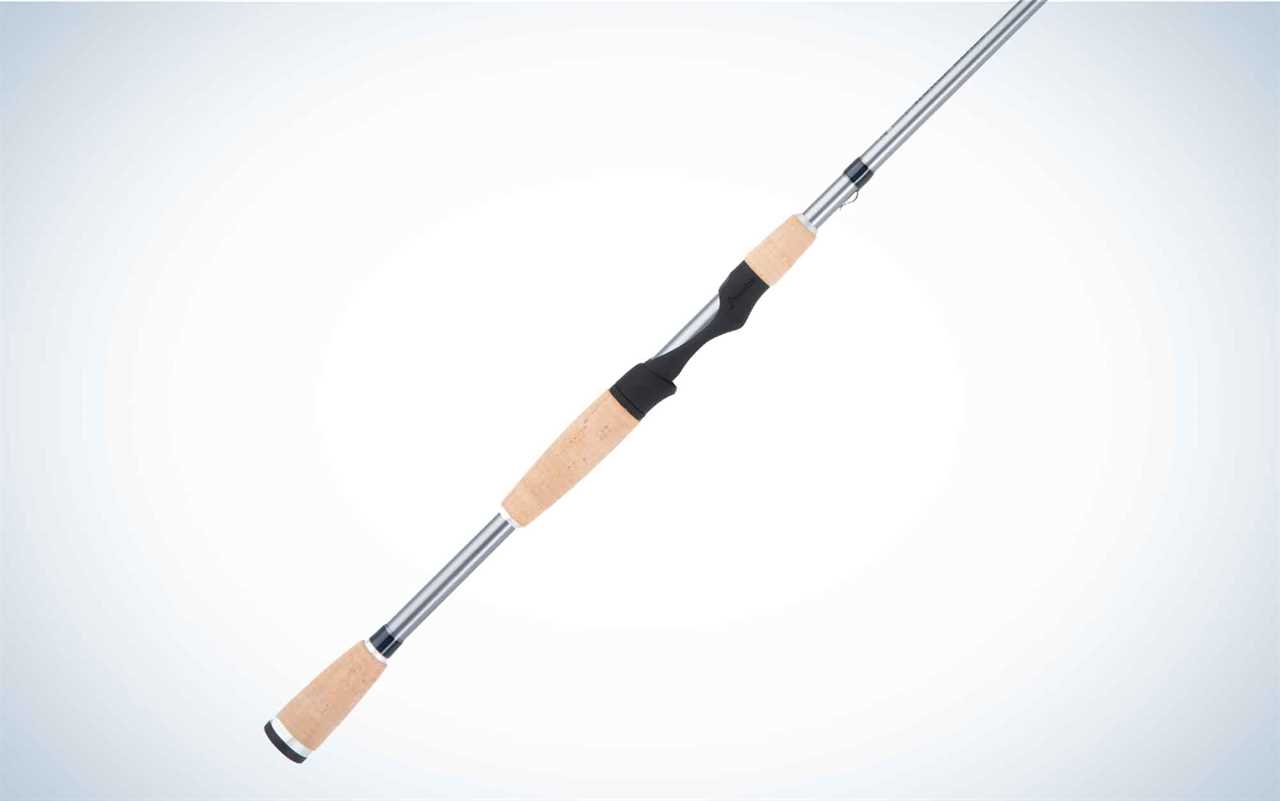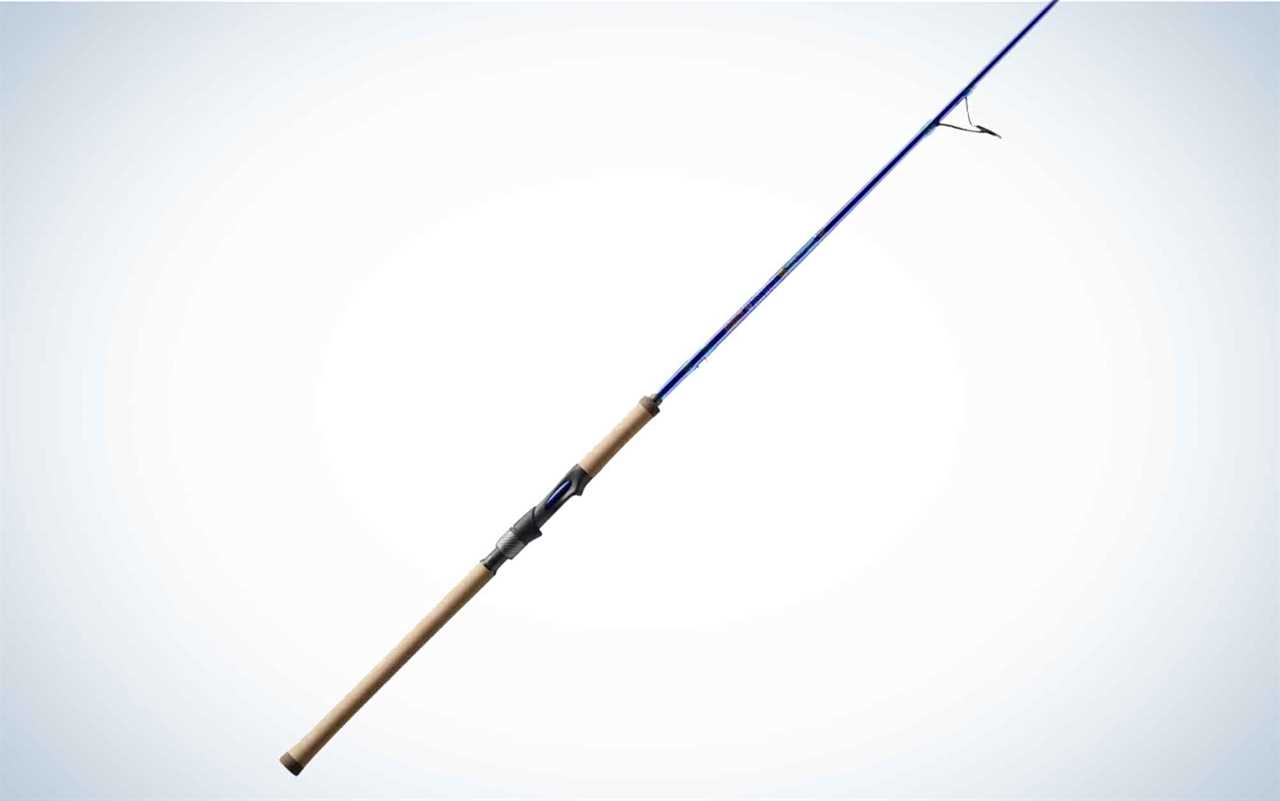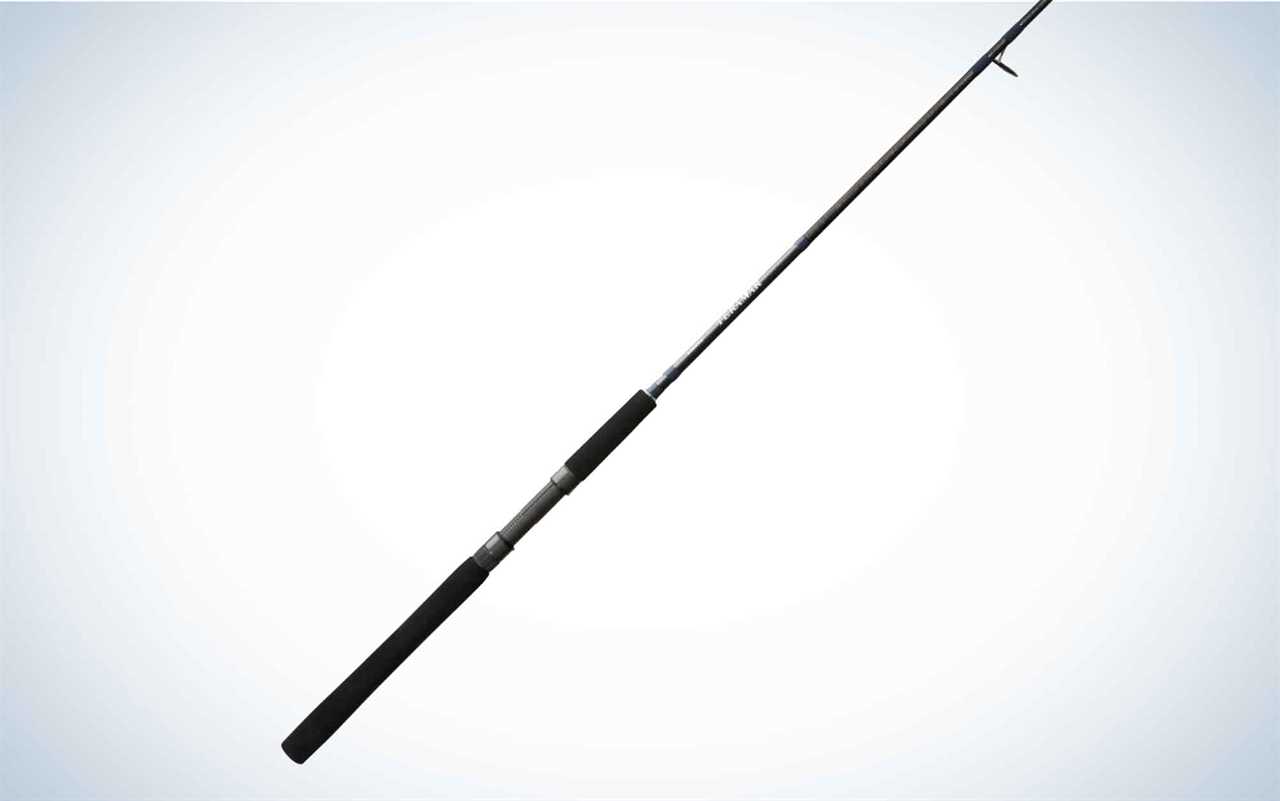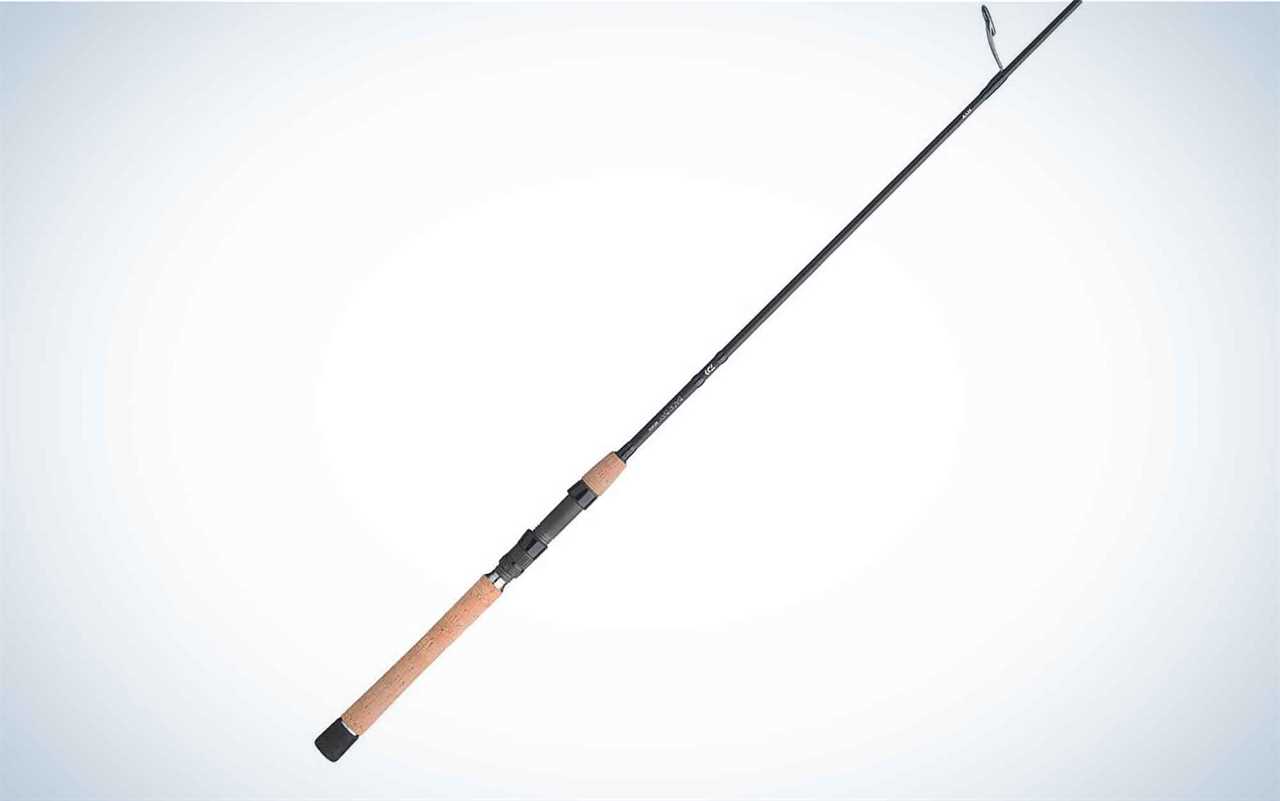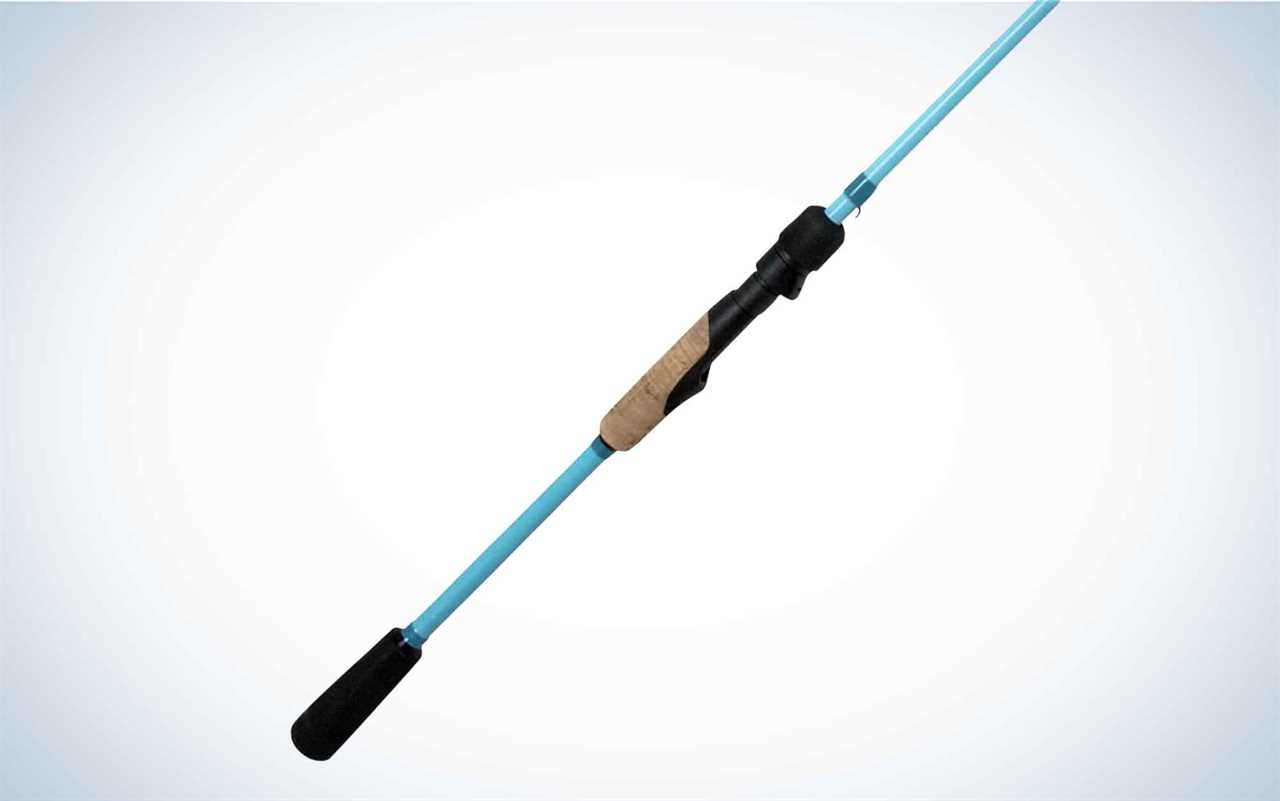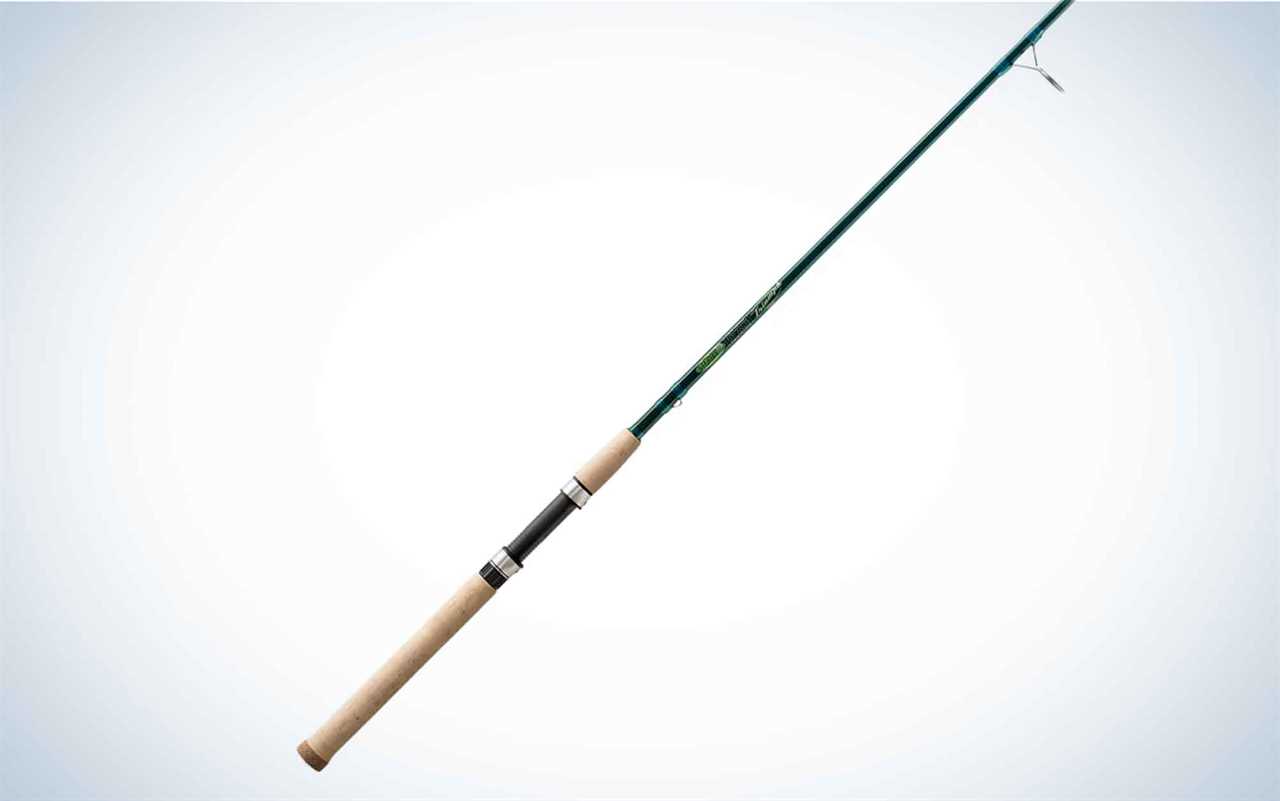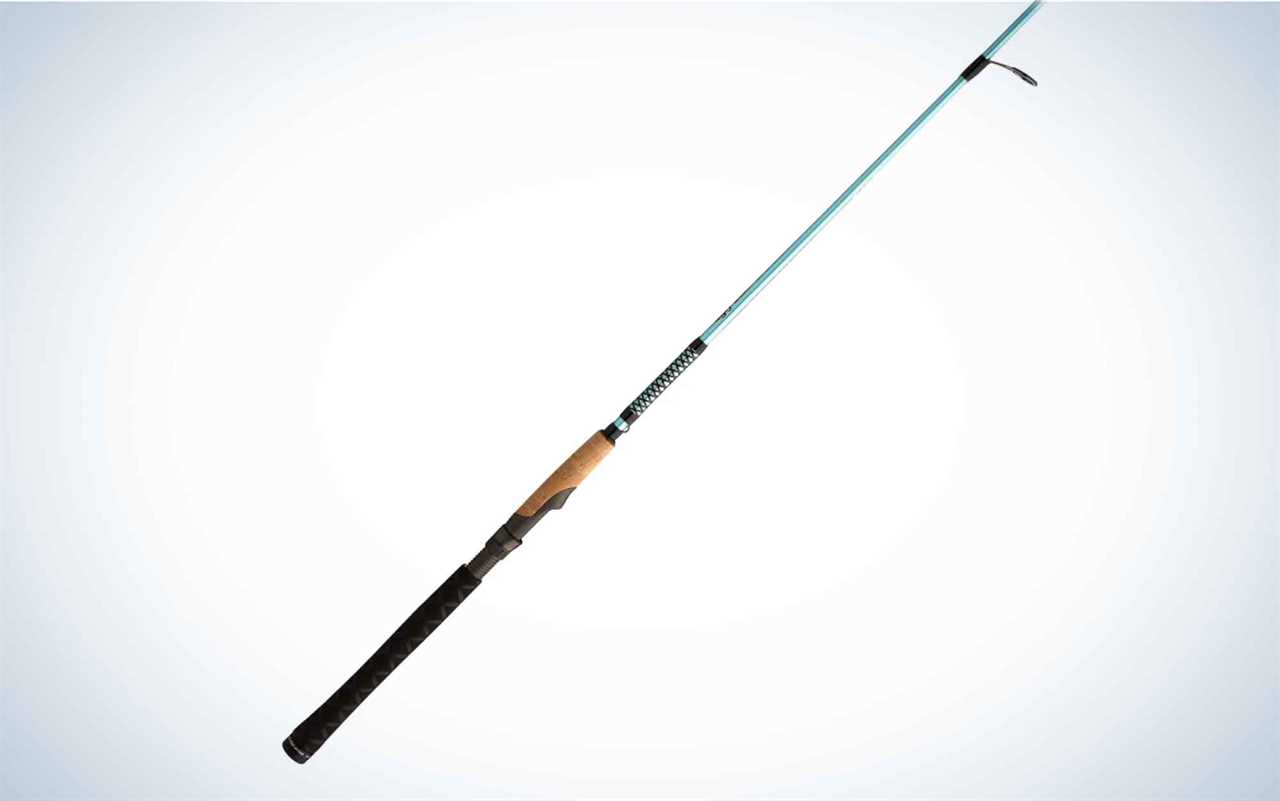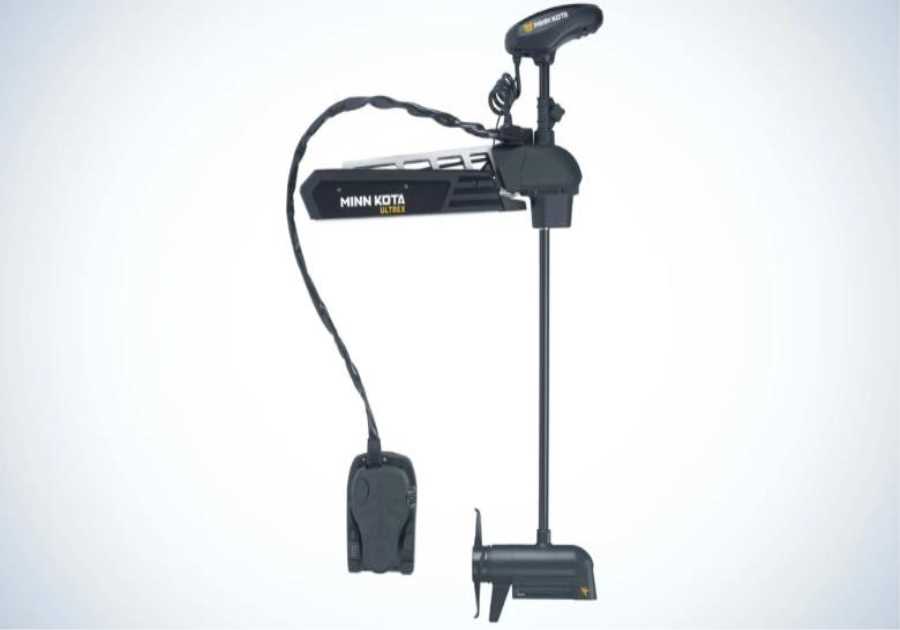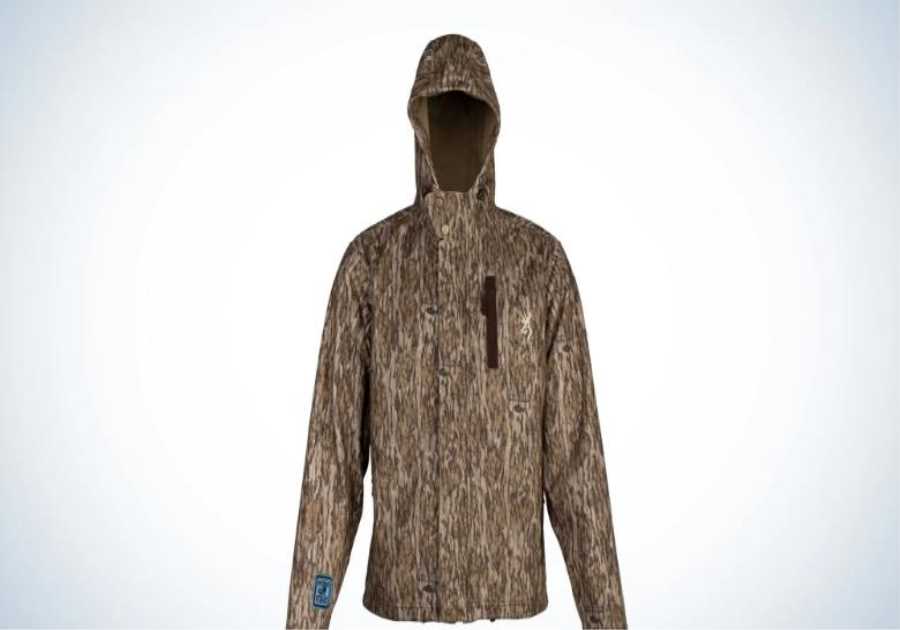||
We may earn revenue from the products available on this page and participate in affiliate programs. Learn More ›
I winced when I realized another giant black drum had my rod doubled over. Not that I have anything against catching these lumbering bottom feeders, but I was justifiably concerned that my light inshore spinning rod might not survive its encounter with this swimming bag of mulch. They average 20 to 40 pounds in this area, and the weight of the fish alone is enough to snap the rod.
To my pleasant surprise, not only did the rod handle the fish well during the fight, but it also had the backbone to hoist the stinky behemoth boatside for a clean release. It was quite a change of pace from its typical duty of catching speckled trout.
Similar scenarios played out more than once over the course of a week fishing the inshore waters around Florida’s Nature Coast. That’s the beauty of inshore fishing, you never know what’s going to happen. You may be finesse fishing for speckled trout, but having a rod that can handle a surprise giant drum or snook can turn your day from average to memorable in a hurry.
I tested some of the most popular options on the market in almost every inshore scenario imaginable to help you find your next stick. While some of these rods excelled far beyond their intended purpose, others didn’t quite stack up when tasked with scenarios outside their comfort zone. Here are my final picks for the best inshore spinning rods.
- Best Overall: Bull Bay Stealth Sniper
- Best Premium: Fenwick World Class
- Best Finesse: St. Croix Legend Inshore Tournament Series
- Best Jigging: Shimano Teramar NE
- Best Light/Heavy Crossover: Daiwa Back Bay
- Best Budget Light-Tackle: Shimano GLF
- Best Heavy-Duty: St. Croix Triumph Inshore
- Best Budget Heavy-Duty: Ugly Stik Carbon Inshore
How I Tested the Best Inshore Spinning Rods
Kevin Hughes
I set out with a simple goal: test as many spinning rods as possible in as many situations as possible. To accomplish this goal I needed a destination that had a variety of species and an equally varied amount of habitat to target them. Ultimately, I settled on Florida’s Nature Coast. This region plays host to just about every inshore gamefish in Florida and includes some of the most diverse habitats to target them. I tested the rods with the help of three friends to get multiple perspectives on each model.
We rated the rods on the following:
- Castability: How far the rods can cast and their accuracy at different distances with different lures.
- Strength: What I like to call “backbone.” This essentially means how the rod handles when casting different lure weights and the amount of power they’re able to exert on fish during a fight.
- Feel: How comfortable the rod feels throughout a full day of fishing. This category includes comfort, ergonomics, and sensitivity. While feel is subjective, having the opinions of four people using the same gear over a series of days helped determine which rods felt the best.
Rods Tested
To keep the testing fair, I divided the rods into two categories: light duty and heavy duty. For the light duty category, I went with a 7-foot, medium-power, fast action rod, perhaps the most universal specification for an inshore rod. For the most part, those specs are regarded as the standard “one size fits all” for inshore fishing.
In the heavy-duty category, I wanted rods that were at least 7-feet long and medium-heavy to heavy in power. They needed to throw bigger lures and fight the largest inshore gamefish, while still handling light tactical should the situation arise.
Reels Used
To make sure I was getting a balanced feel for the performance from each rod, I paired them with the same size reel and line weights. The light-duty rods were paired with 3000 and 4000 size reels spooled with 10-pound PowerPro. The heavy-duty rods were paired with 5000 and 6000 size reels spooled with 30-pound PowerPro.
Lures Used
We finessed fished with soft plastics on 1/8 to ¼ ounce jigheads, threw twitchbaits and topwaters of different sizes and weights, chucked cast-and-retrieve lures like spoons and chatterbaits, and did heavier jigging with ½ to 1 ounce jigs and bucktails.
Species Caught
Kevin Hughes
We caught snook, redfish, speckled trout, sheepshead, black drum, and Spanish mackerel. The size and fight of these fish varied greatly, allowing us to see which rods handled different species the best.
Best Inshore Spinning Rods: Reviews & Recommendations
Best Overall: Bull Bay Stealth Sniper
Key Features
- MSRP: $180
- Lengths: 7 and 7.5 foot
- Powers: Medium light, medium, and medium heavy
- Fact action
- Carbon fiber blank
- Tangle free guides
- EVA foam split grip
Tested Rod Specs
- 7 feet, medium
- Weight: 4.6 ounces
- Line Rating: 6 to 12 pounds
- Lure Rating: ¼ to ⅝ ounce
- Butt Length: 8.5 inches
Pros
- Lightweight
- Impressive backbone
- Excellent casting accuracy and distance
- Reasonable price for elite performance
- Comfortable to cast all day
Cons
- Hard to find in stores
Kevin Hughes
Bull Bay Rods is one of the smaller brands on this list, but don’t let that fool you into thinking they can’t compete with the big names. The Stealth Sniper is the most well-rounded inshore rod we tested, having both finesse and backbone. This rod can cast light jigs a mile with impressive accuracy and has the sensitivity and touch to work small lures precisely. What really separated the Stealth Sniper from the pack was its strength and ability to play large fish that far exceeded its rating. While testing, this rod landed multiple jacks, snook, and black drum up to 40 pounds.
We liked the ultra-comfortable foam split grip that has extended length above the reel seat. The tangle-free guides and well-placed round hook keeper help minimize hassle and line interference when casting.
Overall, the Bull Bay Stealth Sniper was the most complete rod we tested from top to bottom. Its perfect combination of finesse and strength makes it the ideal inshore spinning rod. With a price tag of $180, it’s also significantly less expensive than other comparable rods on this list. When a rod with this level of performance is paired with a price tag like that, it’s hard to deny it the top spot.
Best Premium: Fenwick World Class
Key Features
- MSRP: $475
- Lengths: 6.5, 7, 7.5, and 8 feet
- Powers: Medium light, medium, medium heavy, heavy, and extra heavy
- Actions: Fast and extra fast
- Spinning and casting rods available
- 40/36 ton graphite blend with reinforcing resin
- Titanium guide frames with zirconia inserts
- Cork and foam grip
- Tangle free guides
Tested Rod Specs
- 7 feet, medium
- Line Rating: 8 to 17 pounds
- Lure Rating: ¼ to 1 ounce
Pros
- Incredibly comfortable to fish
- Handles a wide range of line and lure weights
- Extremely lightweight
Cons
- Expensive
- Poor hook keeper placement
I’ll cut right to the chase; this rod is incredible. In fact, were it not for the exorbitant price tag and a baffling design flaw with the hook keeper, it easily would have been rated as the top rod.
Let’s start with the positives. This rod fishes like no other inshore spinning rod I’ve used. Despite being thicker near the grip than other rods in its class, it’s still incredibly light and casts like a dream. The sensitivity when working small lures was beyond impressive, and the palm fitting design of the grips and reel seat make it one of the most comfortable rods I’ve ever fished.
Kevin Hughes
Much like the Stealth Sniper, the World Class is also astonishingly adept at handling fish much larger than its rating would suggest. It has an almost supernatural ability to subdue fish that would push other rods to the breaking point. It’s hard to describe in words, but this rod lets you connect and direct the fish during a fight in a way that’s unique and impressive.
Now, let’s address the negatives. At nearly $500, it’s at the top end of the market for inshore spinning rods. While you certainly get what you pay for in regard to performance and quality, there’s no denying that it’s a hefty price. Second, and perhaps one of the most confusing design flaws I’ve ever seen, this rod has a rectangular hook keeper placed on the left side of the rod, just above the foregrip.
The shape and placement of the keeper means that, if you aren’t paying attention, your line will loop around the keeper while casting, causing your cast to stall and your lure to fly back at your face. I cannot for the life of me figure out how this element made it on an otherwise almost perfect rod. My best guess is that it’s a vestige of the baitcasting rod design, since the looping problem would be a non-issue with a baitcaster. It’s a small flaw that’s easy to fix with a pair of pliers, but that shouldn’t be the case on a rod this well designed and this expensive.
Hook keeper and price aside, the Fenwick World Class is an absolute dream to fish. No other rod we tested had its combination of feel, strength, comfort, and quality. If you’re comfortable with the cost and don’t mind bending the hook keeper, this rod is the total inshore fishing package and well worth the price.
Best Finesse: St. Croix Legend Inshore Tournament Series
Key Features
- MSRP: $330
- Lengths: 7 feet; 7 feet, 3 inches; 7 feet, 6 inches; 7 feet, 9 inches; and 7 feet, 11 inches
- Powers: Light to extra heavy
- Actions: Moderate fast and fast
- Cork split grip
- SCIV+ carbon fiber blank
- Stainless steel and alconite guides
- Tangle free guides
Tested Rod Specs
- 7 feet, medium
- Line Rating: 8 to 17 pounds
- Lure Rating: ⅜ to ¾ ounces
Pros
- Incredibly light
- Ultra-sensitive
- Comfortable and ergonomic
Cons
- Lacks backbone
- Expensive
St. Croix is a trusted brand for inshore spinning rods, and the Legend Tournament Inshore series proves why. Of all the rods tested, this was my personal favorite to fish for a variety of reasons. First, it’s just flat out comfortable. The grip is form fitting and doesn’t have any pain points that wear on you after casting all day. Additionally, it’s the lightest rod of the bunch. The featherlight feel makes this rod a dream for finesse fishing, and the sensitivity it provides is off the charts.
It was the perfect rod for casting smaller jigs and twitchbaits at speckled trout and schoolie sized snook and redfish. It was also one of the more accurate rods tested, making it ideal for sight fishing with small lures. Lastly, the Legend Tournament Inshore is just a downright pretty rod. While it’s not performance related, it does help that a rod this expensive at least looks the part.
Kevin
While this rod excels at finesse fishing and other light tackle applications, the lightweight design has some drawbacks. The primary issue is a lack of backbone and force when trying to set the hook on larger fish. There were several occasions when a fish would spit the hook a little too easily, regardless of how hard the hook set was. This was a pattern that was hard to discount, as it only seemed to happen with this rod. Despite having the same power and action ratings as the other inshore rods tested, there was no denying that this rod felt a little more fragile and lacked some of the strength to play larger fish. It’s also worth noting that the lure and line class rating for this rod are more limited than the others, which is another indication that it’s not designed to function outside of its comfort zone.
While these drawbacks were a little frustrating, it’s fair to say that they aren’t a huge knock against the rod overall. It may not be the most well-rounded, but it’s certainly purpose-built to excel where it counts. I wouldn’t recommend the Legend Tournament Inshore series for anglers targeting large fish with large lures, but it’s absolutely the best rod for light tackle and finesse applications.
Best Jigging: Shimano Teramar NE
Key Features
- MSRP: $230
- Lengths: 6.5 and 7 feet
- Powers: Medium, medium heavy, and heavy
- Actions: Moderate fast, fast, and extra fast
- EVA foam grip
- SeaGuide Zirconia guides
- TC4 Carbon blank
Tested Rod Specs
- 7 feet, medium
- Line Rating: 10 to 20 pounds
Pros
- Durable
- Excellent for jigging
- Lots of backbone
Cons
- Heavy
- Lacks finesse
What the St. Croix Legend Tournament Inshore is for finesse, the Shimano Teramar NE is for jigging. The NE in the name stands for “Northeast” and it’s easy to see why, as it’s designed specifically for the Northeast style of inshore fishing that typically means casting or vertical jigging heavier jigs and plugs.
Kevin Hughe
When it came to throwing heavier lures, this rod was able to handle the strain of casting while still providing us the sensitivity to work the lures accurately. It was the perfect rod for throwing jigs in the ¼ to 1 ounce range for larger snook and redfish and had an impressive amount of backbone to keep the fish pinned and turn their heads during the fight. The extended EVA foam grip rested nicely under my arm and provided a good amount of torque while playing fish.
This rod is a great example of why it’s important to understand what a rod is built for and how it feels, rather than just relying on specs. The Teramar NE we tested is technically the same size, power, and action as the St. Croix Legend Tournament and the Fenwick World Class. But the three rods couldn’t be more different from a performance perspective. The Teramar NE is the bully of the inshore rods we tested, excelling at sticking large fish and keeping them stuck. While it’s definitely not a rod I’d recommend for finesse applications, you’ll be hard pressed to find a better, lighter rod for putting the hammer on fish around structure or in deeper jigging scenarios.
Best Light/Heavy Crossover: Daiwa Back Bay
Key Features
- MSRP: $150
- Lengths: 7 feet, 1 inch; 7.5 feet, and 7 feet, 10 inches
- Powers: Medium, medium heavy, and heavy
- Actions: Fast and extra fast
- Cork grip
- Fuji FazLite tangle free K guides
Tested Rod Specs
- 7.5 foot, medium heavy
- Line Rating: 10 to 20 pounds
- Lure Rating: ⅜ to 1 ounce
Pros
- Well-rounded
- Reasonably priced
- Good casting distance
- Strong backbone
Cons
- Limited lure rating
The Daiwa Back Bay proved to be a perfect bridge between the light tackle rods and the heavier duty ones. Daiwa markets the Back Bay series as a versatile crossover rod for east coast inshore conditions, and after testing it I firmly agree. I found that the 7-foot, 6-inch, medium-heavy Back Bay had enough sensitivity and finesse to work lighter tackle. The fast action tip was delicate enough to impart subtle movement to jigs and smaller plugs, as well as feel lighter strikes. While this was a pleasant surprise, the rod still performed well as a heavy-duty setup, especially when fighting larger fish.
Kevin Hughes
It was excellent for throwing jigs in the ½ to 1 ounce range and had enough stopping power to turn the heads of larger snook and drum. The tangle free guides and classic cork grip provide a clean casting experience, and the rod itself has the perfect amount of power for ripping long casts with small to medium sized lures. If there are any real drawbacks to the Back Bay, they aren’t immediately noticeable. The biggest issue I see is the lack of a protective coating on the blank, which could lead to significant wear and tear down the line, especially if using this rod in harsher conditions.
Best Budget Light-Tackle: Shimano GLF
Key Features
- MSRP: $100
- Lengths: 6.5, 7, and 7.5 feet
- Action: Moderate fast
- Hybrid rubber cork/EVA foam split grip
Tested Rod Specs
- 7 feet, moderate fast
- Line Rating: 10 to 20 pounds
- Lure Rating: ¼ to ½ ounce
- Grip Length: 9.8 inches
Pros
- Comfortable to fish
- Reasonable price
- Sensitive
Cons
- Durability
- Non-tangle free guides
Kevin Hughes
The Shimano GLF series was specifically designed for anglers on the Gulf coast, primarily those who target speckled trout. After using this rod I can certainly see where that design comes into play. Speckled trout have notoriously soft mouths which typically require softer rods to prevent pulled hooks. The GLF has a very soft, sensitive tip that’s perfect for feeling subtle strikes and playing fish delicately. While the softer tip and subtle action are great, this rod has a lot of power near the base.
Unlike many rods geared towards lighter tackle, the GLF has a stout butt section wrapped with carbon tape, which Shimano calls DIAFLASH. This sounds a little gimmicky, but it does seem to provide an exceptional amount of torque on hook sets and while fighting fish. I think that the unique combination of subtle touch and backend power makes this rod very user friendly for less experienced anglers, providing a good base across a variety of techniques. In fact, one of the testers who is primarily a fly angler and rarely uses spinning gear said that this rod was their favorite of the group.
Best Heavy-Duty: St. Croix Triumph Inshore
Key Features
- MSRP: $150
- Lengths: 7 feet and 7 feet, 6 inches
- Powers: Medium light, medium, medium heavy, and heavy
- Fast action
- Cork handle
- SCII Carbon blank
- SeaGuide aluminum-oxide guides
- Tangle free guides
Tested Rod Specs
- 7 feet, heavy
- Line Rating: 12 to 25 pounds
- Lure Rating: ¾ to 2 ounces
Pros
- Durable
- Can use a wide range of lure weights effectively
Cons
- Heavy
The St. Croix Triumph series has been around forever, and it’s generally regarded as a trusted entry-level rod for anglers looking to invest in quality gear without breaking the bank. While that may be true for some rods in the Triumph lineup, the new Triumph Inshore series is far from entry level quality. With two coats of flex-coat finish and power for days, I consider the Triumph Inshore the spiritual successor to the sadly discontinued St. Croix Tidemaster lineup. The Tidemaster was known for durability and power with a finesse edge, and the Triumph Inshore carries much of that same feel. The heavy power rod we tested was as stout as a broomstick, but still had enough touch and sensitivity to jig effectively.
St. Croix is exceptional at designing rods that perform like a workhorse but still have a refined look and feel. The Triumph Inshore showcases that blend, with a classic design featuring cork handles and a pretty finish. This rod looks and feels like a showroom model but performs like industrial machinery, and that’s not at all a bad thing.
Best Budget Heavy-Duty: Ugly Stik Carbon Inshore
Key Features
- MSRP: $100
- Lengths: 6.5 and 7 feet
- Powers: Medium light, medium, and medium heavy
- Actions: Fast and extra fast
- Rubber shrink tube handle
- 24-ton graphite blank
- One-piece stainless steel guides
Tested Rod Specs
- 7 feet, fast, medium heavy
- Line Rating: 12 to 20 pounds
- One-piece stainless steel guides
Pros
- Durable
- Reasonable price
- Comfortable to fish
Cons
- Heavier
- Lacks finesse
Talk about the surprise of the group. Let’s call it like it is, Ugly Stik has a certain reputation. Traditionally viewed as an unbreakable blue-collar rod for the average angler, they have never been seen as particularly light or finesse oriented. While the Carbon Inshore series maintains some of that classic Ugly Stik feel and durability, it’s fair to say that it couldn’t be more different from a performance perspective.
Kevin Hughes
Were it not for the logo on the side, I would never have guessed this rod was an Ugly Stik. It’s relatively light and has a nice blend of sensitivity at the tip with power at the base. Unlike other Ugly Stick models, the Carbon Inshore actually feels like it’s designed to be fished a variety of ways over a single trip. The action and power are adequate for fishing smaller lures, but it still has the juice to whip larger lures or bait a good distance.
Despite the impressively light feel, this rod maintains some of the ubiquitous Ugly Stik “bend don’t break” performance and durability. Unfortunately, it’s impossible to have the best of all worlds, and the Carbon Inshore suffers from drawbacks related to that design. While it’s significantly lighter than other Ugly Stik rods, it’s still much heavier than many of the other inshore rods we tested. Additionally, while its durability is undoubtedly top notch, that leads to an inevitable compromise in regard to finesse and sensitivity. All that said, it’s still an impressive all-purpose rod for the price, and a great option for anglers looking for a versatile setup that won’t break the bank.
Read Next: Best Inshore Spinning Reels
How to Choose the Best Inshore Spinning Rods
Kevin Hughes
As with most fishing gear, understanding when and where you’ll be using the rod is the first step in deciding which one is best for you. Knowing what species you’ll be targeting and how you’ll primarily be fishing is important for you to decide what style of rod best suits you.
Techniques
Inshore fishing can include a wide range of styles and techniques. If you prefer light tackle and like throwing small jigs and twitchbaits, a rod that’s sensitive and capable of casting lighter lures is important. Likewise, if you prefer heavy jigging or throwing large plugs, you’ll want a rod that’s built to handle that kind of strain.
Rod Power and Action
This is perhaps one of the most misunderstood elements when it comes to spinning rods, with the two often being swapped interchangeably. Power refers to the rod’s overall build and the amount of weight it’s intended to handle when casting or fighting fish. Action refers to the way a rod imparts action while casting, working lures, and fighting fish. Power and action have a variety of ratings, with power going from light to heavy and action going from slow to fast.
The most commonly used inshore rod style is medium power and fast action. This rating generally provides the most well-rounded ability to work lures of different styles and fight a wide range of fish. Fast action indicates a stiffer tip and overall feel that allows for quicker lure movements and more powerful hook sets. Slow action generally means a softer overall feel and a more flexible tip, allowing for more deliberate and slow movements. Slower actions are also generally preferred for fish that have a lot of head shaking or softer mouths, as it helps dampen impact and keep fish buttoned.
Materials and Construction
Not all inshore spinning rods are created equal. While having a super light carbon fiber or graphite blank can be great for keeping rod weight down, they may not be able to handle casting heavy lures or fighting larger fish as well. Some rods incorporate a blend of materials to help them handle different techniques better, but this can also add to the overall weight and feel of the rod. Different styles of carbon blends can be lighter and stiffer, while other blends can make rods more flexible.
Another important element to consider is the style and material of the rod guides. For saltwater, you’ll always want guides made of non-corroding materials like aluminum or stainless steel. There are also different styles of guides, some of which are non-tangle and better for casting. Lastly, the type of insert in the guides is also important. This is the part of the guide that makes direct contact with your line, and you’ll want something that doesn’t chip or pop out easily. Inserts can be made of a wide variety of materials, from simple plastic to ceramic, or metals like aluminum and titanium.
Read Next: How to Catch Inshore Redfish, Trout, and Flounder from a Kayak
Final Thoughts on the Best Inshore Spinning Rods
The best inshore fishing rod for you is best determined by your target species and preferred technique. While all the rods on this list are excellent in their own ways, they all have things that make them better suited for specific situations. Having a good grasp on when and where you’ll be using the rod is critical to understanding which purchase makes the most sense.
We put these rods through the paces and learned a lot in the process. While specs are a helpful decision making tool, ultimately there is no substitute for getting your hands on a spinning rod and testing it yourself. Hopefully this list has given you the information to make a more informed assessment the next time you pick up an inshore spinning rod.
- Best Overall: Bull Bay Stealth Sniper
- Best Premium: Fenwick World Class
- Best Finesse: St. Croix Legend Inshore Tournament Series
- Best Jigging: Shimano Teramar NE
- Best Light/Heavy Crossover: Daiwa Back Bay
- Best Budget Light-Tackle: Shimano GLF
- Best Heavy-Duty: St. Croix Triumph Inshore
- Best Budget Heavy-Duty: Ugly Stik Carbon Inshore
The post The Best Inshore Spinning Rods of 2024, Tested and Reviewed appeared first on Outdoor Life.
||-------------------------------------
By: [email protected] (Kevin Hughes)
Title: The Best Inshore Spinning Rods of 2024, Tested and Reviewed
Sourced From: www.outdoorlife.com/gear/best-inshore-spinning-rods/
Published Date: Wed, 17 Apr 2024 20:00:00 -0400
.png)
